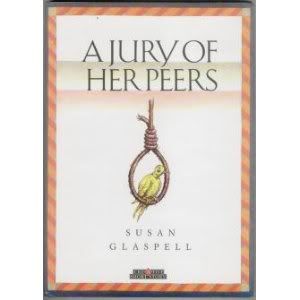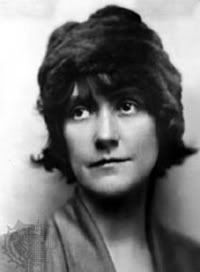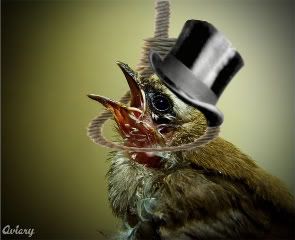
Susan Keating Glaspell’s short story, A Jury of Her Peers was highly influenced by her marriage, career, and literary influences. Born in Davenport, Iowa in 1876 to a semi-middle class family, Glaspell was able to finish school and receive hr B.A. from Drake University. “To be a woman graduate student in the 1960s was to hear recognizably male points of view, some of which were noticeably misogynist, declared to be ‘universal’” (Rivkin and Ryan, 766). After graduating in 1899 she quickly snatched a job at the Des Moines Daily News. By 1901, she felt she enough experience from the paper that she was able to quit her job and begin writing fiction. Glaspell has written over 50 short stories, nine novels, eleven plays, and one biography.

After Glaspell had established herself as a respected author, she met George “Jig” Cook, who was already married at the time. There affair together lead to an increasing scandal which pushed them out of Iowa to Greenwich Village, New York. Not only was Cook “a twice-divorced father of two; he had given up a promising university career to try his hand at truck farming and socialism.” (Ozieblo) Once married in 1914, Glaspell found Cook becoming harder and harder to deal with. Cook was a practioner of free love, an alcoholic, and extremely unfaithful. Along with his many affairs, the bulk of Glaspell’s marriage is reflected through her writing.
Once in New York, they “found other free thinking liberals and radicals in both politics and art; the ideal breeding ground for their experiments in theatre.” (Ozieblo). Together they formed The Provincetown Players, while spending their summers in Provincetown Massachusetts. They began putting on plays for amusement but soon became “a venue for American plays that were too experimental and controversial for Broadway…[It] gave her a forum and voice for her ideas and introduced her to new people and new thoughts” ( womans). The Provincetown Players were closed down in 1922 by Glaspell and Cook because of back-fighting and scheming between the players.
Glaspell lived in a time when female rights was just beginning to emerge. Although Glaspell might not have considered herself a “feminist,” her writings clearly spoke differently. Her main literary influences were Kate Chopin and Fanny Fern. One theme that Glaspell uses in A Jury of Her Peers, is the fight against the idea that women’s lives revolved around their husbands. This is a common theme that Chopin used in many of her texts. Fern commonly used the them that women’s opinions were ignored and suppressed, which is also very dominant in the Glaspell’s short story.
Although Chopin and Fern were great literary influences, it was mostly due to her marriage with Cook, and the experiences as a reporter for the Des Moines Daily News. Although her feminist philosophy and life with her husband helped sprout ideas for the story, “she credits [Cook’s] influence for challenging her to change her genre from fiction to drama, and to ‘overthrow convention’ in her form and content” (Maillakais).
While writing for the paper, fresh out of college, Glaspell investigated the murder of John Hossack from early 1900 to late April 1901. As a reporter, she wrote over twenty articles on the Hossack trial, in which the victim’s wife, Margaret, was charged and found guilty of his murder. Glaspell coined her “The Midnight Assassin,” in one of her articles and continued to visit the Hossack farmhouse, which made an impacting impression on her later work. “Glaspell’s evolving portrait of Mrs. Hossack sheds light on Glaspell’s thinking and sympathies--and the news articles foreshadow the themes she later developed in ‘Trifles’ and ‘A Jury of Her Peers’ ” (Bryan).
To read Susan Glaspell's articles on the Midnight Assassin: http://www.midnightassassin.com/SGarticles.html
In A Jury of Her Peers, there are three female characters: Mrs. Hale(county attorney's wife), Mrs. Peters (the sheriffs wife), and Mrs. Wright (who is being held in prison while her husband’s murder is being investigated). As the story unfolds, the time period that is portrayed and the location, is ambiguous, but the language of the women’s obedience toward domesticity allows the reader to realize that this is pre-feminism. “The arts of pleasing men, in other words, are not only angelic characteristics; in more worldly terms, they are the proper acts of a lady. ‘What shall I do to gratify myself or to be admired?’ is not the question a lady asks” (Gilbert and Gubar, 814). When Mrs. Hale is pulled away from her home to follow her husband to the murder scene, she is more concerned with how she is leaving her house, rather than the house she is going to. “But what her eye took in was that her kitchen was in no shape for leaving: her bread all ready for mixing, half the flour sifted and half unsitfted. She hated to see things half done;” (Glaspell, 532).
The difference in gender roles is seen verbally and nonverbally. While the men storm into the house and begin walking around aggressively, heading straight to the stove, the women enter timidly and stay close together near the doorway. The men in A Jury of Her Peers are: Mr. Hale (county attorney), Mr. Peters (the sheriff), and Mr. Henderson (the witness). When they enter the house, they notice that is has not been kept up on, and they criticize Mrs. Wright, who is in custody. “The women did not speak, did not unbend. He went to the sink and began washing his hands. He turned to wipe them on the roller towel--whirled it for a cleaner place. ‘Dirty towels! Not much of a housekeeper, would you say ladies?’ He kicked his foot against some dirty pans under the sink” (Glaspell, 536). Mrs. Hale, quiet offended to Mr. Henderson’s accusations, responds with a remark about how farms are a great deal of work and how men’s hand might now be as clean as they should be. Mr. Henderson then responds back, “Ah, loyal to your sex, I see” (Glaspell, 536). Mr. Henderson sees the women’s roles as they are, and when Mrs. Wright’s house is not clean, he sees this as laziness.
The women who have been suppressed to this role, understand what it is like to try and please the patriarchal rules of society. By seeing the house out of line, they see this as a red flag. No woman, of this time, would break free from the masculine’s cultural error to follow their own desires. Doing things for herself instead of for the domestic life of being a mother and wife was seen as selfish. “[This] gender identity is no less a construction of patriarchal culture than the idea that men are somehow superior to women; both are born at the same time and with the same stroke of the pen” (Rivkin and Ryan, 768).
Glaspell’s characters are very stereotypical but it was too prove a point. Women are categorized and suppressed, their lives controlled and distorted, their voices sucked completely from them. In A Jury of Her Peers, Glaspell gives these female characters a very strong voice and a very important decision. Because of their roles in society, their methods of communication and power of observation gives them a silent voice, but a crucial voice. When the women are left alone downstairs they come across an empty birdcage with a broken door, and they begin to talk about Mrs. Wright when she use to be Minnie Foster, a young girl with a beautiful singing voice. Mrs. Hale then admits her guilt for not visiting her more. “ ‘I stayed away because it weren’t cheerful--and that’s why I ought to have come…I don’t know what it is, but it’s a lonesome place, and always was” (Glaspell, 542). She then describes the kind of man Mr. Wright was. By stirring these memories of him, and contemplating what Minnie Foster’s life must have been life, a sort of sympathy is unveiled because she, being a woman, understands the hard lifestyles and isolation of having a farm. “ ‘But he was a hard man, Mrs. Peters. Just to pass the day with him--.’ She stopped, shivered a little. ‘Like a raw wing that gets to the bone’ (Glaspell, 542).

When it comes to communication between the women and then men in the story, the thoughts and opinions of Mrs. Hale and Mrs. Peters are completely disregarded. Even though the women hint that Mr. Wright was not an easy man to live with, they do not take this as a motive, they instantly ignore and suppress their voices. Instead of listening to what Mrs. Hale has to say about Mr. Wright, they brush the subject off by saying he will get to it later. Therefore the men miss the big picture by over looking the real clues in the story. Glaspell does this intentionally, to show that you can try to suppress a woman’s voice, but you can never suppress her intelligence. “And if feminism, in its inspiration, is about the painful particularities of any one person’s experience, their right to be heard despite centuries of deafness and deliberate, systematic muting, then how can it especially name into silence voices that know no language with which to speak? Shouldn’t women especially know what it means to need to speak and be denied a language with which to speak? Yet isn’t to speak for other women, women outside the glow of the tent light of highly literary culture, even if it is to take up their cause and stand in for them a the podium of history, to do what men have always done to women?” (Rivkin and Ryan, 769).
Although the antagonist in Glaspell’s, A Jury of Her Peers, is a woman, she has gone beyond the constructs of “angel” or “monster” to create a victim in disguise. Glaspell transcends these prototypes that have been established by male writers, and creates a variation of the angel and monster role. “In the Middle Ages, of course, mankind’s great teacher of purity was the Virgin Mary, a mother goddess who perfectly fitted the female role [female anthropologist Sherry Ortner] defines as ‘merciful dispenser of salvation.’ For the more secular nineteenth century, however, the eternal type of female purity was represented not by a Madonna in heaven but by an angel in the house” (Glaspell 814).
Mrs. Wright, or Minnie Foster as she is used by the other women, has been subjected to the role of the domestic angel to the “Angel of Death;” therefore both angel and monster in one. On the other hand, Glaspell eliminates this image by embodying the possessive, patronizing, attitude of men toward women, and using that as Mrs. Wrights own motive for salvation. “Certainly, imprisoned in the coffin like shape of a death angel, a woman might long demonically for escape” (Gilbert and Gubar, 818). By eliminating Mr. Wright, she has freed herself from all constraints. “For to be selfless is not only to be noble, it is to be dead. A life that has no story, like the life of Goethe’s Makarie, is really a life of death, a death-in-life” (Gilbert and Gubar, 817). Because Mrs. Hale and Mrs. Peters can remember other circumstances in their own lives where they have felt stillness in their homes and hearts, they are able to provide empathy for Mrs. Wright, and ultimately break down the constraints of law and what is considered justice to them. “ ‘I might ‘a’ known she needed help! I tell you it’s queer, Mrs. Peters. We live close together, and we live far apart. We go through the same things--it’s all just a different kind of the same thing! If it weren’t--why do you and I understand. Why do we know--what we know this minute?’ ” (Glaspell, 544).
While the men are upstairs, the women have unintentionally solved the murder of Mr. Wright. Because their voices have been suppressed, the women both agree with a glance to use their silenced voices against the men, and allow Minnie Foster, to go free. “There was the sound of a knob turning in the inner door. Martha Hale snatched the box from the sheriff’s wife, and got it in the pocket of her big coat just as the sheriff and the county attorney came back into the kitchen” (Glaspell, 546). Martha Hale quickly makes this decision, under her husband’s nose as well as the laws. “In order to ensure the well-being of those entrusted to her care reveals that she can manipulate; she can scheme; she can plot--stories as well as strategies” (Gilbert and Gubar, 818). Both Martha Hale as a character, and Susan Glaspell as a female writer, take the influence of the masculine society, and turn it upside down, by both tricking and this hegemonic structure. Martha Hale does this by using her silenced voice against the men, while Glaspell takes the stereotypical female gender and uses it to break down misogynistic constraints.

Bryan, Patricia L. "Susal Glaspell." Midnight Assassin. Univeristy of Iowa Press. Web. 14 May 2010.
Gilbert, Sandra and Gubar, Susan. "The Madwoman in the Attic." Literary Theory: An Anthology. Second Ed. Julie Rivkin & Michael Ryan. Malden, MA: Blackwell Publishing Ltd., 2004. 812-825. Print.
Glaspell, Susan. "A Jury of Her Peers." Fiction 100: an Anthology of Short Fiction. Twelfth ed. James H. Pickering. New York: Longman, 2010. 532-46. Print
Irigaray, Luce. "The Power of Discourse and the Subordination of the Feminine." Literary Theory: An Anthology. Second Ed. Julie Rivkin & Michael Ryan. Malden, MA: Blackwell Publishing Ltd., 2004. 795-798. Print.
Maillakais, Mikes. "A Woman's Place: Literary Background for Susan Glaspell's Trifles." American Literature: Research and Analysis Web Site. University of South Florida, 30 July 1996. Web. 14 May 2010.
Rivkin, Julie and Ryan, Michael. "Introduction: Feminist Paradigms." Literary Theory: An Anthology. Second Ed. Julie Rivkin & Michael Ryan. Malden, MA: Blackwell Publishing Ltd., 2004. 765-769. Print.
Ozieblo, Barbara. "About Susan Glaspell." Susan Glaspell Society, 2010.
No comments:
Post a Comment